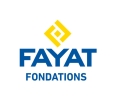The tie rod works featured 143 P2-type units in the form of Repetitive & Selective Grouting to stabilise the diaphragm walls as the ground excavation progresses and until completion of the raft foundation and the bracing floor slabs.
The tie rods were set up in very dense and compact terrain, including Green Clay, and both Pantin and Argenteuil Marl. This required predrilling then highly meticulous drilling with different drilling tools to extract all the cuttings and accordingly ensure fitting of quality sleeve pipes.
To avoid disrupting the passage of the L18 tunnel boring machine, a specific, totally destructible system featuring no steel components was required. So Sefi-Intrafor used twelve 27lm glass fibre anchoring tie rods for the first time in partnership with Freyssinet.
The glass fibre tie rod methodology is as follows:
- Coring in the diaphragm wall and setup of distribution plates;
- Predrilling, drilling then equipping of glass fibre tie rods with integrated PVC sleeve pipes;
- RSG grouting;
- Tensioning with acceptance testing;
- Relaxation and removal of metal components (cover, plate, head, etc.) prior to the passage of the L18 tunnel boring machine.
The glass fibre tie bar has 4 distinct parts:
- 4 removable 3lm steel strands;
- 4 GF strand 11.8lm CGA spliced with 4 “A” steel couplers (steel/GF);
- 4 GF strand 11.8lm CGA, in turn spliced with 4 “B” steel couplers (GF/GF);
- Smooth PVC sleeved pipe along the entire length of the tie bar for RSG.
With the aim of providing continuous monitoring over the coming 2 years, half of these unusual tie bars were equipped with dynamometric cells.
To facilitate logistics, the tie bars were assembled directly on the worksite. This is why it was necessary to set up assembly benches and set aside a 30m x 5m space in the centre of the excavations with parallel earthworks in conjunction with Demathieu-Bard. These glass fibre tie bars were assembled on the worksite by Sefi-Intrafor and supervised by Freyssinet based on very precise specifications.
The glass fibre bars were only available in 11.8lm so were spliced with steel couplers. Given these were steel couplers, Sefi-Intrafor made sure they weren’t in the path of the L18 tunnel boring machine. The drilling gradients were adjusted accordingly.
Given the length of the tie bars (26.6lm) and the rigidity of the material, it took the whole worksite team (10 people) to put them in place in the drilling sites.
Project owner: Aéroport de Paris
General contractor: Systra and Alpes Contrôles
Consortium members: Demathieu-Bard, Sefi-Intrafor
GF supplier: Freyssinet


